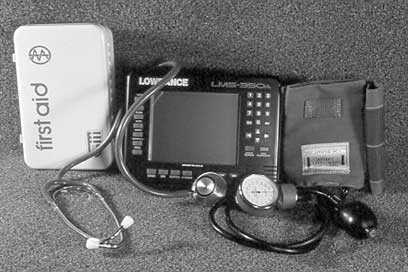
If you’re tired of sitting in a stand or blind, and want to get out, walk around and have some action, this is the month for you.
Sooner or later every boater flips a switch, presses a button or turns a key and nothing happens. A motor doesn’t turn, a light doesn’t illuminate or an LCD screen remains blank. The luckiest among us have these bad experiences at the dock; those of us who are less fortunate sometimes get to enjoy them while out of sight of land.
Whether the episode will be an inconvenience or an emergency depends a lot on how well prepared you are.
A blown fuse is the most common culprit when an electrical device fails to work, and the number of otherwise intelligent people who go out in a boat without spare fuses is amazing.
It is a good idea to carry at least three spares onboard for every fuse on your boat. Keeping three spares lets you replace the blown fuse immediately in the hope that the new one won’t blow instantly. If it does blow, you have two chances to locate the short, fix it and test your fix.
Making sure you have the right fuses can take the better part of a weekend. If your boat is new and no accessories have been added, the fuses should all be in the boat’s fuse panel. If the dealer installed some electrical accessories, or if you bought the boat used, it could be the victim of do-it-yourself electrical maintenance, and it might take an afternoon of tracing the wires between the non-factory accessories and the battery to find their in-line fuses.
Hunting the fuses down is only the first step; the next is confirming that they are the proper size for the job. If the accessory is working, you know that the fuse in place is large enough, but it may be too big to properly protect the device and its wiring.
When a proper fuse is not handy, a larger one is sometimes installed by a boater who plans to replace it with the right size later. Then, after “later” never comes, the 20-amp fuse that was installed in place of a blown 3-amp fuse can pass enough current to cause the fuse-blowing problem to send up smoke signals.
An accessory’s owner’s manual should list the proper fuse size. If you don’t have a manual, you can check with a marine dealer or contact the customer-service department of the accessory’s manufacturer for the information.
Finding the fuses for today’s sophisticated outboard engines can require your marine dealer’s help. There may be separate fuses for the ignition, trim and fuel pumps and other components scattered around under the engine cowling or mounted on the inside of the transom in a dark corner of a rear compartment.
Some of the fuses may be unusual and not generally available at the marinas or auto parts stores near the water. It is a good idea to carry your spares in a padded container to protect them from rough-water impact and vibration so they are ready to go when you need them.
If changing any fuse on your boat requires a fuse puller or other special tool, it is a good idea to store the tools near the fuses. If a flashlight isn’t part of your standard kit, you should store one aboard along with an extra set of batteries.
An inexpensive combination wire stripper and crimper, a supply of crimp-on splices and a roll of electrical tape can temporarily fix most fuse-blowing shorts.
If your boat uses circuit breakers in some areas, it is a good idea to carry a spare for each size. They don’t fail often, but it happens, and chances are slim that you’ll find a plug-in replacement at a marina or fishing camp on the water.
Spare bulbs for your running lights are another good item to keep aboard. It’s not only illegal to run without lights at night, it’s one of the definitions of stupid.
You can choose in advance whether you want to raise your blood pressure with an emergency or just be annoyed by an inconvenience when the inevitable happens. I don’t know about you, but enduring an inconvenience gets my vote every time.


